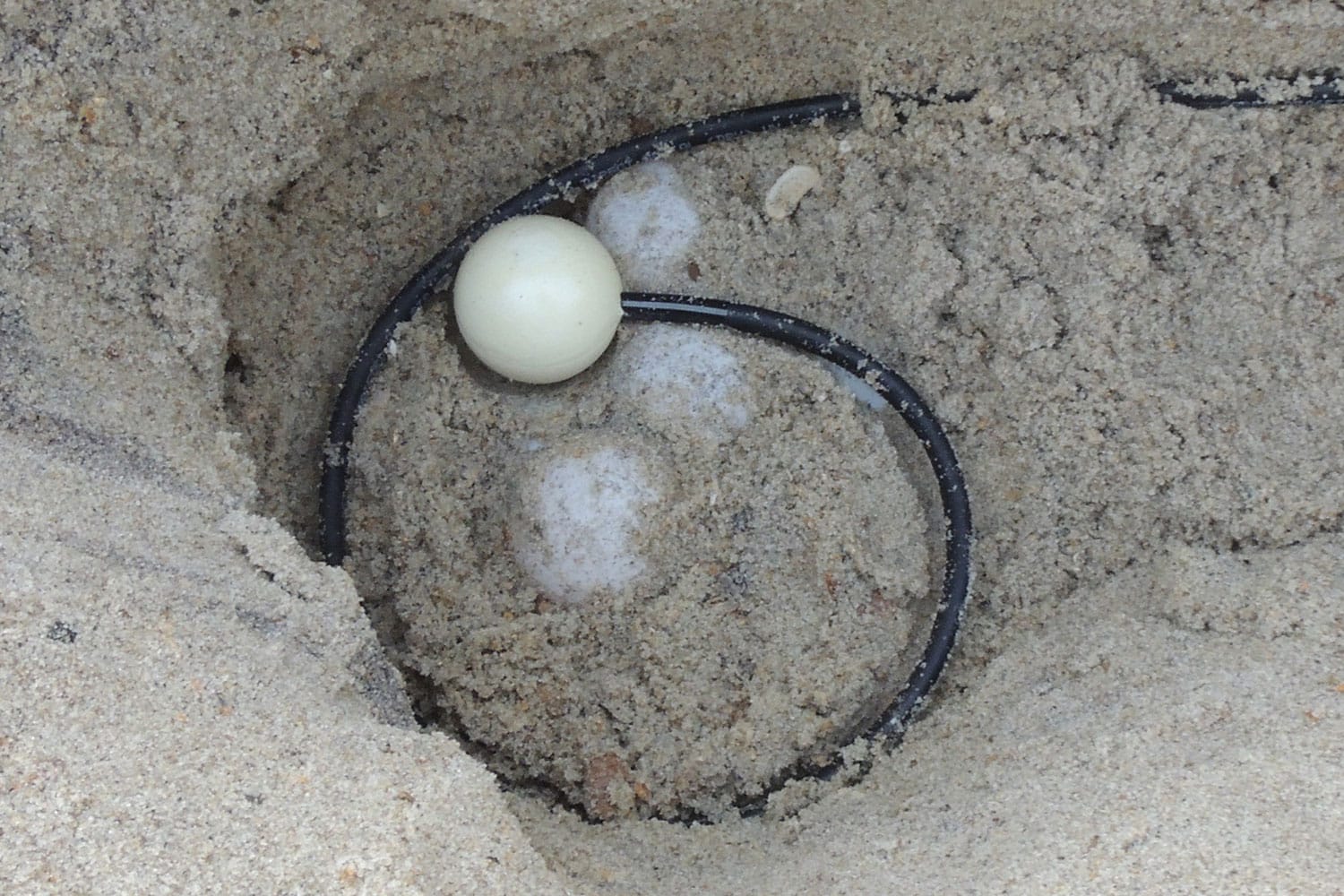
Current understanding of sea turtle nesting, hatching, and emergence events has been largely limited to observable events on the surface of the sand, though recent approaches using audio or visual equipment have allowed scientists to better understand some underground nest phenomena.
Now, a team of researchers led by Erin Clabough of the University of Virginia and Samuel Wantman of Nerds Without Borders has developed a new low-cost sensor that resembles a sea turtle egg, enabling scientists to monitor nests remotely and predict when hatching will emerge almost to the day – providing valuable information for conservation efforts and turtle nest management.
Sea turtle populations worldwide are in decline due to human activities, with Loggerhead, Green, Hawksbill, Kemp’s Ridley, Leatherback, and Olive Ridley sea turtles all listed as threatened species. Conservation efforts are largely focused on endangered hatchlings once they emerge to ensure they head out to sea rather than to the bright city lights. Conservationists can count the days since eggs were laid to predict when they will hatch and then observe the nest, but these efforts are imprecise and labor-intensive.
In their study, researchers used a novel, low-cost, accelerometer-based system called TurtleSense, to monitor loggerhead sea turtle nests on Cape Hatteras National Seashore to see if they could predict more accurately when the turtles would emerge from the nest. The TurtleSense system itself incorporates a motion-sensing accelerometer, a temperature sensor, and a microprocessor, which are contained within a waterproof polyurethane sphere that is the same size, shape, and coloration as a sea turtle egg.
The researchers buried this egg-sized sensor within the nest and attached a cable to a communication tower that remotely transmitted data on the movement of hatchlings within the nest. They identified a pattern of intense hatchling movement within the nest, followed by a pause, which let them predict almost the exact day when the young turtles would dig out of the sand. Their results suggest that hatchlings can detect motion, which allows them to communicate and head out together as a group. The system also accurately identified non-viable nests where monitoring was no longer necessary.
The researchers also monitored Olive Ridley and Green Turtle nests and saw similar patterns, suggesting that the system will work for a range of sea turtle species.
“It’s absolutely magical to witness baby turtles poke their heads out of the sand and sprint towards the ocean, but it’s an event that can be very hard to predict,” said Erin Clabough. “The TurtleSense system is a low-cost, creative solution that remotely allows us to detect how baby turtles synchronize developmental movement within the nest in real-time. We can use the system to detect hatching and to better predict when the hatchlings will emerge onto the beach.”
“As each turtle emerges from its shell, it climbs up to join its siblings at the top of the clutch of eggs, creating a wave of commotion among all the other baby turtles in the nest,” Samuel Wantman adds. “When there is no more commotion, there is a period of quiet, which may be the impetus for all the hatchlings to boil out of the nest together.”
Journal reference:
- Erin B. D. Clabough, Eric Kaplan, David Hermeyer, Thomas Zimmerman, Joshua Chamberlin, Samuel Wantman, The secret life of baby turtles: A novel system to predict hatchling emergence, detect infertile nests, and remotely monitor sea turtle nest events. PLOS ONE, 2022; DOI: 10.1371/journal.pone.0275088
Low-cost, egg-shaped sensor to monitor critical attributes of sea turtle nest
Source: Tambay News

0 Comments